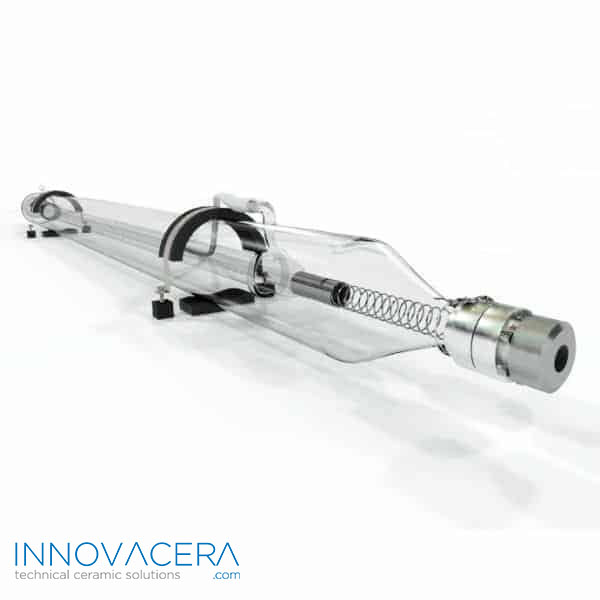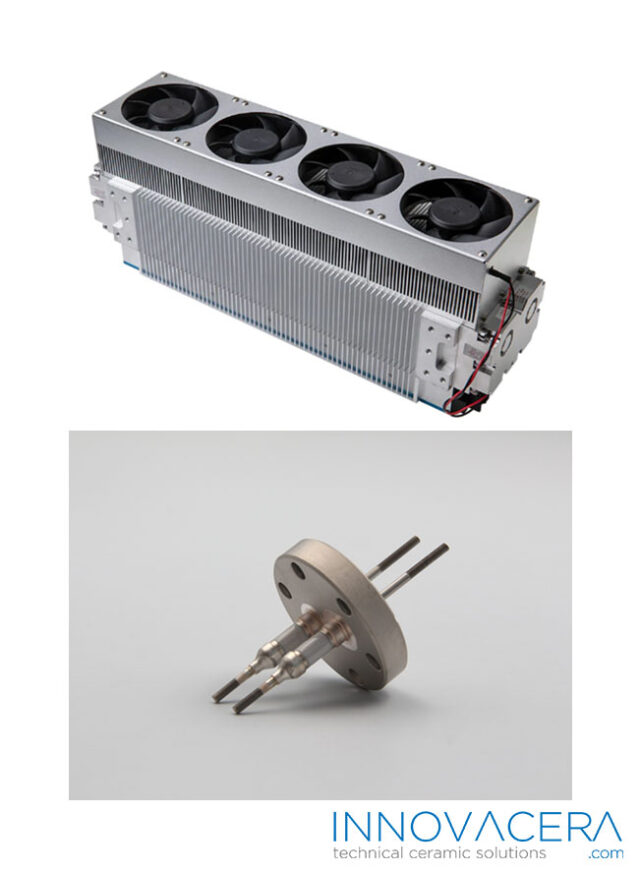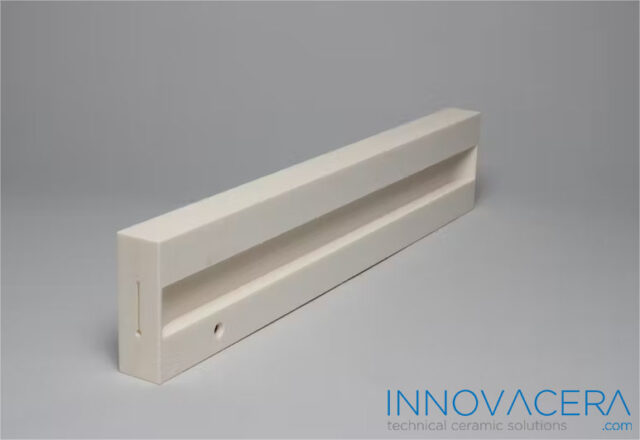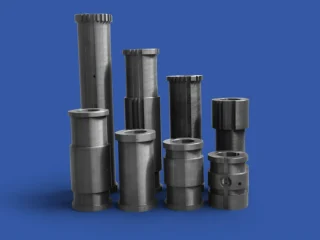The laser tubes usually used in CO2 laser machines are categorized into DC glass、RF metal tubes and ceramic tubes. Let’s delve deeper into some key aspects of these three common core types so you can choose the best one for your machines.
1. Glass Laser Tubes

Glass laser tubes are cylindrical tubes made of glass that are used as a medium for generating laser beams. It can come in various sizes and shapes, depending on the specific application and power requirements. Glass is a poor thermal conductor, which means circulating water is needed to assist in the removal of heat. So nearly all glass tubes need to be water-cooled, without a water-cooling system, a glass laser tube would overheat and become inoperable.
Glass CO2 laser tubes rely on direct current, DC, to excite the carbon dioxide gas. Machines with DC tubes are mostly used for nonmetal materials, such as acrylic, wood, leather, plastic, paper, or bamboo.
2. Metal Laser Tubes

Metal laser tubes are sealed metal chambers made of metal and ceramic, which contain the laser gas mixture. They are air-cooled and their gas is excited by radio frequency alternating current (RF). Properly regulating temperature only requires fans, which are built directly into laser machines.
Metal is typically stainless steel or other durable alloys and ceramics is usually alumina, they are brazed to form a feedthrough of up to 1.0 x 10 -10 atm-cc/sec. In conclusion, metal laser tubes are crucial components of industrial laser cutting systems. They provide the power and control required to generate laser beams for metal cutting, marking, and welding applications. Whether using CO2 or fiber laser technology, these tubes allow for precise and efficient processing of various metal materials.
3. Ceramic Core Tubes

Ceramic core is manufactured by fusing two halves of the ceramic core together at 800°C. CO2 lasers have evolved from glass-tube, high-voltage designs to metal-tube RF electrode technology. But recently it’s common for CO2 Laser manufacturers to use pure ceramic core inside their laser tubes.
Advantages and Disadvantages of Different Laser Tubes:
| Glass Laser Tubes | Metal Laser Tubes | Ceramic core tubes | |
| Advantage | lower cost | 1. Engraving quality and speed higher. 2. Maintenance cost lower. 3. Longevity and it is 4-5 times longer than glass tubes. |
The gas will not pollute and leak. |
| Disdvantage | Tubes require frequent replacement and have a short longevity. |
Higher cost | 1.Higher cost 2.Difficult maintenance 3. In comparison with a metal-sealed laser, another disadvantage of ceramic core lasers is their lower relative heat conductivity. |




 Enquiry
Enquiry